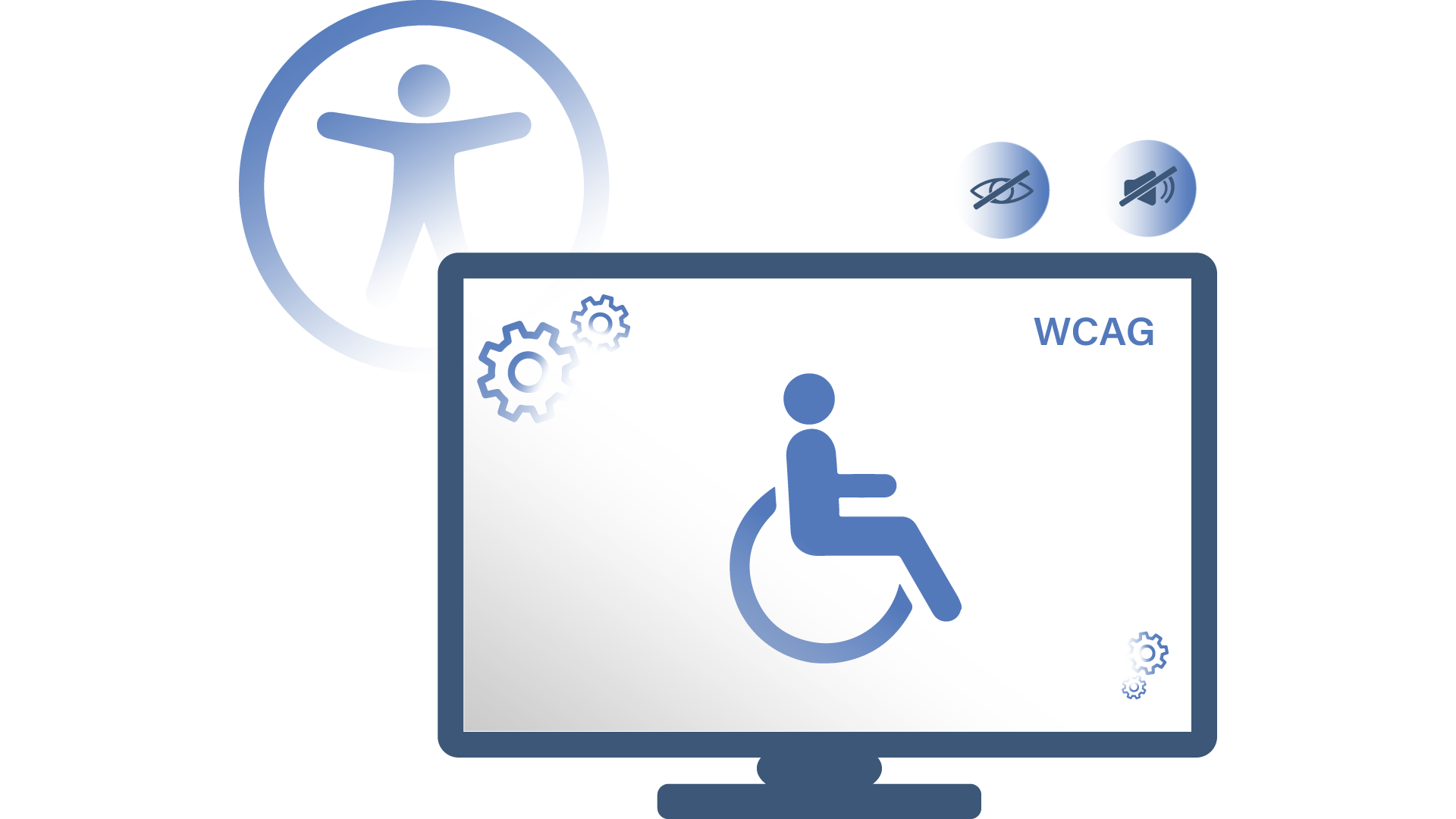WCAG / ADA
Οι Οδηγίες προσβασιμότητας περιεχομένου στο internet αποτελούν αναμφισβήτητα τα πρωτόκολλα με τη μεγαλύτερη επιρροή στη διαμόρφωση της πολιτικής προσβασιμότητας στο διαδίκτυο.

Τι είναι το WCAG?
Το WCAG (Web Content Accessibility Guidelines) αποτελεί τις Οδηγίες προσβασιμότητας περιεχομένου διαδικτύου, οι οποίες είναι αναμφισβήτητα τα πρωτόκολλα με τη μεγαλύτερη επιρροή στη διαμόρφωση της πολιτική προσβασιμότητας στον ιστό. Το WCAG είναι απίστευτα πολύπλοκο, με πολλά διαφορετικά σημεία και απαιτήσεις, αλλά όλα βασίζονται σε 4 βασικές αρχές. Το πρώτο βήμα για την Συμμόρφωση στο WCAG, είναι η κατανόηση αυτών των αρχών:

Ευχρηστία
Οι τρόποι με τους οποίους οι χρήστες αντιλαμβάνονται το περιεχόμενο στο διαδίκτυο μέσω των αισθήσεων όρασης, ήχου και αφής. Μερικοί εξ΄ αυτών είναι λεζάντες για βίντεο, κείμενο που μπορεί να προσαρμοστεί ως προς την αντίθεση, χρώμα, μέγεθος καθώς επίσης απόσταση κειμένου, γραμματοσειρά και παρόμοιοι παράγοντες που διευκολύνουν την ανάγνωση.

Κατανόηση
Τα sites πρέπει να είναι εύκολο να κατανοήθούν από όλους. Δεν πρέπει χρησιμοποιούν πολλούς τεχνικούς όρους ή περίπλοκη ορολογία, να μην έχουν δυσνόητες οδηγίες που είναι δύσκολο να ακολουθηθούν και να έχουν συνεπείς οδηγίες που δεν θα μπερδέψουν τους χρήστες.

Χρηστικότητα
Οι τρόποι με τους οποίους κάποιος μπορεί να χρησιμοποιήσει το site. Αφορά άτομα με κινητικές αναπηρίες, αδύναμους μύες, τραυματισμένα άκρα κ.λπ. Ένα χρηστικό website πρέπει να είναι πλήρως προσβάσιμο από πληκτρολόγιο, πλήρως πλοηγίσιμο με την όραση, αλλά να προσφέρει και επιπλέον εναλλακτικές λύσεις.

Γιατί πρέπει το site μου να είναι συμβατό με τους κανόνες του WCAG;
Το WCAG δημιουργήθηκε από το World Wide Web Consortium, γνωστό ως W3C. Πρόκειται για έναν οργανισμό με πάνω από 440 μέλη, συμπεριλαμβανομένων ηγετών από επιχειρήσεις, μη κερδοσκοπικούς οργανισμούς, πανεπιστήμια, κυβερνητικούς φορείς και σχετικούς κλάδους. Η ανάπτυξη προτύπων προσβασιμότητας στο διαδίκτυο ήταν ένα από τα πρώτα ζητήματα που αντιμετωπίστηκαν από τους ιδρυτές του W3C στα μέσα της δεκαετίας του 1990. Ωστόσο, χρειάστηκαν αρκετά χρόνια μέχρι να δημοσιευτεί ένα συνεκτικό σύνολο προτύπων. Το 1998, ένα έγγραφο 25 σημείων σχετικά με τις βέλτιστες πρακτικές προσβασιμότητας στον internet, τέθηκε ως βάση για την πρώτη έκδοση του WCAG που δημοσιεύτηκε το επόμενο έτος, το 1999. Σήμερα, η ενημερωμένη έκδοση WCAG 2.1 είναι το πρότυπο του W3C για την προσβασιμότητα στον internet και αυτό που οφείλουμε να ακολουθούμε. Το W3C αρχικά επικεντρώθηκε στην τυποποίηση των πρωτοκόλλων, έτσι ώστε τα websites και τα online εργαλεία να είναι συμβατά μεταξύ τους. Κάθε πρότυπο W3C ελέγχεται αρκετές φορές, δοκιμάζεται και αναλύεται πριν εγκριθεί από τα μέλη. Συνήθως, τα πρότυπα του W3C έχουν 3 επίπεδα συμμόρφωσης, από το Α έως το ΑΑΑ.

Θέλεις να συνεργαστούμε?
Παλαιάς Καβάλας 65, Αθήνα
Ψάχνεις το επόμενο βήμα στην καριέρα σου? Στείλε μας το βιογραφικό σου




